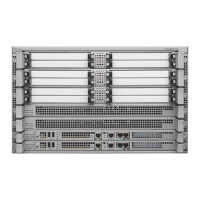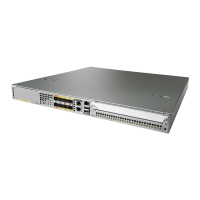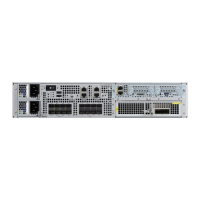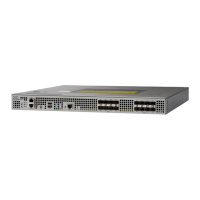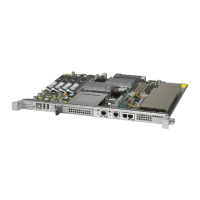24-5
Cisco ASR 1000 Series Aggregation Services Routers SIP and SPA Software Configuration Guide
OL-14127-08
Chapter 24 Overview of the Cisco DSP SPA for ASR 1000 Series
Restrictions
arrive at that same regular interval at the receiving station (for example, they might not be received every
20 ms). The difference between when the packet is expected and when it is actually received is defined
as a jitter.
To handle the jitters, the SPA-DSP maintains a jitter buffer to store a certain amount of voice frames in
the buffer and wait for late arriving voice frames. The jitter buffer size is determined by counting the
number of packets that arrive late and createa ratio of late arriving packets to the number of packets that
are successfully processed. This ratio can be used to determine the jitter buffer size to determine a
predetermined allowable later-packet ratio. After the jitter buffer is full with the specific voice packets,
it plays all the RTP audio stream for VoIP in a steady stream to the SPA-DSP to be able to convert them
into a steady audio stream.
Comfort Noise and VAD
This section discusses about how to deal with voice packets and silence period during a voice call. It also
talks about how these voice quality issues can be rectified by using the voice activity detection (VAD)
feature. The IP-based telephony systems need a voice acitivity detector to detect silence periods in the
voice signal and temporarily discontinue transmission of the signal during the silence period. This saves
bandwidth and allows the far-end to adjust its jitter-buffer. The downside is that during silence periods,
the far-end phone has to generate its own signal to play to the listener. Usually, comfort noise is played
out to the listener to mask the absence of an audio signal from the far-end. Comfort noise is usually
modeled on the far-end noise so that there is not a stark contrast when you switch from the actual
background noise to the comfort noise.
There are two possibilities to which comfort noise is injected in a voice call. The foremost is the use of
VAD. Whenever VAD kicks-in, comfort noise packets are introduced in the audio stream. The second
possibility (not a major contributor) is the kicking-in of echo-cancellation. Whenever echo-cancellation
becomes active, comfort noise packets are introduced in the audio stream. The characteristics of these
comfort packets is determined through an algorithm which includes monitoring on-going speech and
receiving a signature of the background noise.
The SPA-DSP provides voice-activity detection and comfort noise functionalities by default. You can
enable the local VAD settings by using the vad on override command from config-dspfarm-profile
mode. Using the vad on override command will override the external vad settings. To disable the local
vad settins use the vad off override command from config-dspfarm-profile mode.
Restrictions
• To enable voice transcoding and transrating functionality, first you need to enable the DSP SPA,
create a dspfarm profile, and attach it to an SBC application. See the
Chapter 25, “Configuring the
Cisco DSP SPA for the ASR 1000 Series.” for these details.
Supported MIBs
The following MIBs are supported in Cisco IOS XE Release 3.2 for the DSP SPA on Cisco ASR 1000
Series Routers:
Common MIBs
• ENTITY-MIB

